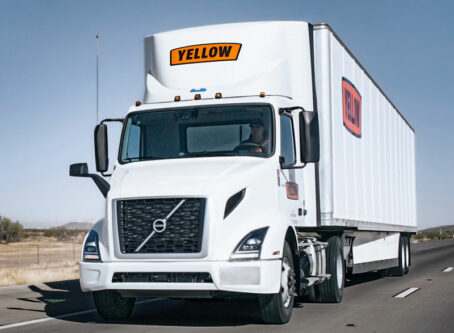Key information in NTSB reports lost in translation
 If you read any of the recent stories outside of Land Line Magazine on the National Transportation Safety Board’s report about a June 2016 crash in Kansas that killed six people, you likely read about how the truck driver’s fatigue played a role and that collision avoidance technology could have prevented the deadly wreck.
If you read any of the recent stories outside of Land Line Magazine on the National Transportation Safety Board’s report about a June 2016 crash in Kansas that killed six people, you likely read about how the truck driver’s fatigue played a role and that collision avoidance technology could have prevented the deadly wreck.
However, those who read about the report in a publication other than Land Line probably missed the part about the driver of the SUV testing positive for methamphetamines and cocaine. Oh, and most of the stories also left out that the NTSB couldn’t determine if the driver of the SUV had a license because he left the hospital without the staff’s knowledge. Investigators conducted a 50-state check for his driver’s license but couldn’t find one. The NTSB report said they don’t know “whether the name or birth date that the undocumented immigrant driver provided to investigators was incorrect or whether he was unlicensed.”
This isn’t the first time important information from an NTSB crash report was lost in translation by the time it was turned into a news release and subsequently published by various media outlets.
In October, the NTSB issued a news release announcing it had determined sleep apnea played a role in a 2016 fatality crash involving a tractor-trailer and a motor coach that occurred near Palm Springs, Calif. Soon after, news outlets published such headlines as “Undiagnosed sleep apnea a factor in deadly California bus crash.”
But some extremely important information failed to make its way from the report to the NTSB’s news release.
First, the truck driver – even after the crash – was never diagnosed to be suffering from sleep apnea. He was never tested. Instead, the assumption of him suffering from sleep apnea was based on the driver’s weight.
“Based on the evidence that the truck driver did not move his vehicle for more than two minutes after the traffic break ended and his reported belief that the break had lasted about four times its actual length, he was most likely asleep at the time of the crash, due to fatigue that, given his extremely high level of obesity, probably resulted from undiagnosed and untreated moderate-to-severe obstructive sleep apnea,” the report said.
In addition, the actual NTSB report cited several other factors in the California crash, including a failed traffic management plan.
The report also said the truck driver had violated hours-of-service regulations for several days prior to the crash and that the bus driver had slept four hours or less in the day-and-a-half leading up to the crash. However, the NTSB news release didn’t mention the hours-of-service violation or the bus driver’s lack of sleep as being contributing factors to their potential fatigue. Instead, the news release referenced the truck driver’s undiagnosed sleep apnea and the bus driver’s untreated diabetes.
Mistakes happen. Surely, it was an anomaly that some of the important details from the NTSB report didn’t get to the media.
But after the NTSB sent its news release on the Kansas crash, it appears there may be a trend.
The news release from the NTSB focused on a need for safety improvements in fatigue, occupant protection and collision avoidance. It didn’t mention that the SUV driver didn’t have a license and that he tested positive for two hardcore drugs.
The crash happened overnight in June 2016 when a tractor-trailer hit a slow-moving SUV on Interstate 70 near Goodland, Kan. Six of the passengers in the SUV were killed, while the driver and four other passengers were severely injured. The truck driver didn’t sustain injuries in the crash. NTSB said the probable cause was the trucker’s failure to perceive and take effective action to avoid rear-ending the SUV.
According to the NTSB report, additional factors in the crash were the truck driver’s fatigue and lack of expectancy to encounter the slow-moving SUV, as well as the SUV driver’s decision to continue traveling on a highway at a reduced speed without using the vehicle’s hazard lights. The NTSB said the overloaded SUV and the lack of collision avoidance on the truck contributed to the crash’s severity. Nine of the 11 people in the SUV weren’t wearing seatbelts.
The NTSB report also noted that the 22-year-old driver of the SUV tested positive for meth and cocaine.
However, the hospital had no residual sample available for confirmatory tests. Because of the driver’s medical condition, the Kansas Highway Patrol was unable to obtain additional toxicology samples.
The tractor-trailer was reportedly driving the speed limit of 75 mph when the crash occurred. It is unclear how fast the SUV was traveling, but passengers said they believed to be going around 35-45 mph. Some of the passengers said they were driving slowly because of a mechanical failure that occurred after a fuel stop. Most of the SUV’s major mechanical systems were severely damaged in the crash. Investigators were unable to corroborate passengers’ reports of a mechanical problem keeping the SUV from traveling at highway speeds.
However, the news release focused more on the need of a collision avoidance system.
“In this crash, a collision avoidance system, especially one capable of automatically applying the brakes, might have prevented this accident or at least lessened the severity of the crash,” said Rob Molloy, director of the NTSB’s Office of Highway Safety.
A collision avoidance system may have very well helped avoid this crash. It’s also possible that the wreck could have been avoided if the truck driver was more awake at 2 a.m.
But making this more about the trucker instead of focusing on the hazards created by the SUV is wrong.
At the very least, all of the pertinent details need to be included in the news release.
And all news reporters need to look at the full report rather than relying on the NTSB’s news release. Because history shows us that a lot of important information gets lost in translation.









